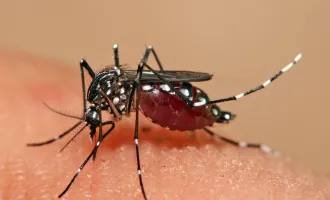Graduate Students Engage the Public Over Funding Basic Science Research
Over a pitcher of beer at Terzetto’s one afternoon, a group of us involved in the outreach branch of the Science Policy Group at UCSF brainstormed ways to educate the public about the importance of funding basic science research.
The annual Federation of American Societies for Experimental Biology (FASEB) Stand Up For Science video contest was a great place to start The goal of the contest was “to increase the awareness of the critical role of federal agencies, such as the National Institutes of Health (NIH) and the National Science Foundation (NSF), in funding biomedical and biological research.”
Our group, which consisted of graduate students Florie Charles, Sama Ahmed, Nir Oksenberg, Marta Wegorzewska, Argenta Price and postdoc Christin Chong, understand that fundamental knowledge born out of basic science research drives advances in health and technology. However, the public has not always been supportive of funding basic research because they are unaware of its value. As scientists, we rely on public funds and the support of the voting public to do our work. To gain support, we need to engage and educate the public.
One sunny day in San Francisco we hit the streets outside AT&T Park and asked passers-by this question: The year is 1960 and you had $10 to give to science, would you spend it on a) discovering an affordable treatment for diabetes or b) finding out how bacteria protect themselves?
It was not surprising that most people preferred to fund a diabetes treatment. Then using a whiteboard and colorful markers, we set out to educate the public on how the discovery that bacteria can cut DNA actually lead to a treatment for diabetes as well as countless new technologies.
In February, FASEB, the policy voice of scientists, announced that our video, “Funding Basic Science to Revolutionize Medicine,” had won the competition, beating out the six other semi-finalists.
FASEB invited Marta Wegorzewska to represent our group on Capitol Hill on March 5. She was among nearly 50 scientists who brought the FASEB funding recommendation for the FY 2015 to more than 80 congressional offices.
Each scientist was urged to share a story. Marta’s story came from the perspective of a graduate student at the end of her training, making decisions about the next steps in her career. Marta focused on the next generation of scientists who watch their mentors increasingly more concerned about finding funding for their labs and talented postdocs discouraged by the difficulty of finding faculty positions.
Our winning video was shared with congressional staff members during Capitol Hill Day and has been viewed more than 9,000 times on YouTube. This success emphasizes our ability to communicate a complex story in a manner that is interesting, understandable and enjoyable.
We received a $5,000 prize, which will go towards furthering efforts in science communication. We are grateful for the support we have received from FASEB and the UCSF community and hope future graduate students and postdocs continue engaging with the public on this important issue.
Are you interested in getting involved in science outreach? There are many options, and UCSF is a great place to explore the multitude of ways to develop your science communication skills.
One great place to start is the Science Policy Club (facebook.com/UcsfSciencePolicyGroup) at UCSF. Consider blogging, making short videos or producing radio shows. After you begin, you will see how supportive your peers are, and how much people are willing to collaborate. Look out for opportunities and seminars related to science communication including the Three Minute Thesis (3MT) competition coming to UCSF in the near future. Finally, turn to your own communities and talk to them about how funding basic science research revolutionizes medicine (http://www.youtube.com/watch?v=GmhD-RWNL6c).


